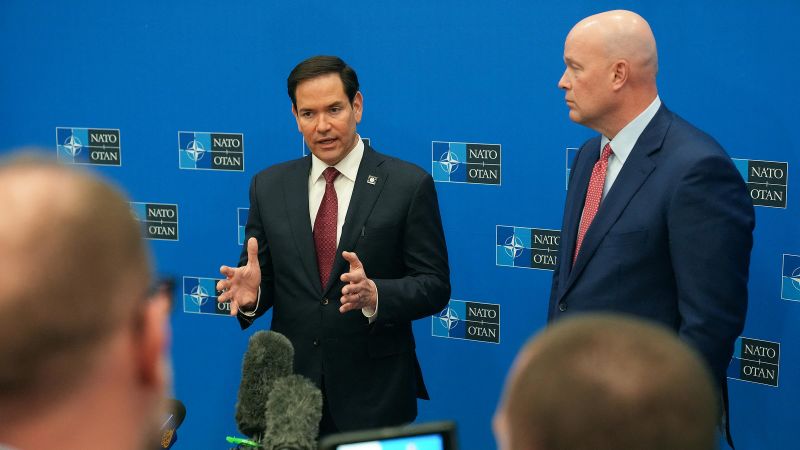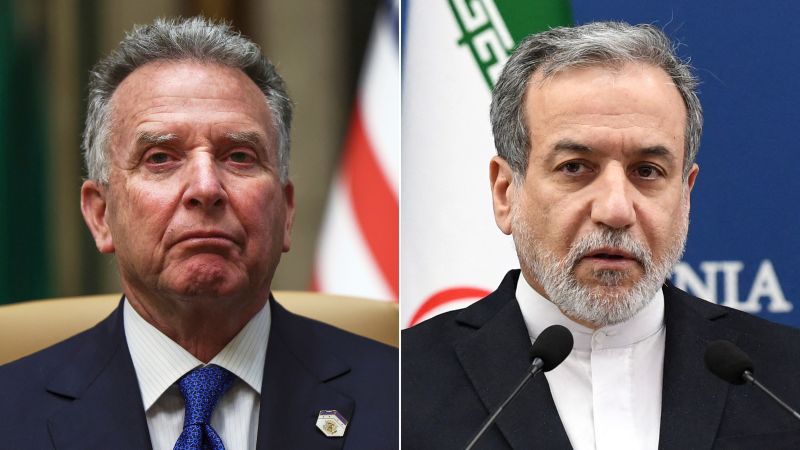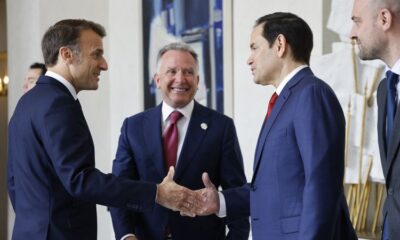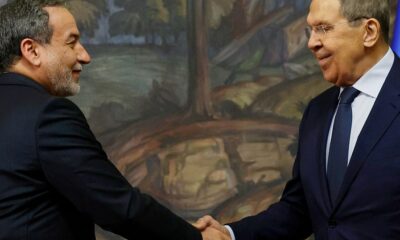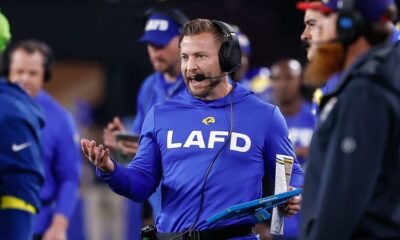Brussels
CNN
—
US Secretary of State Marco Rubio revealed on Friday that he had met with an envoy for President Vladimir Putin this week and sent him back to Moscow with a message: the clock is ticking on when there needs to be a breakthrough in the peace talks to end the Ukraine war.
“That time is coming,” Rubio said, “It’s pretty short.”
Within weeks, Rubio said at the end of the two-day NATO foreign ministers meeting in Brussels, the US wants to see concrete steps and “at some point it will be clear whether you [Russia] want peace or you don’t want peace.”
It wasn’t a threat, Rubio insisted, but it underscored where the Trump administration’s thinking is.
In the past week, President Donald Trump’s frustration with his Russian counterpart has become clear. Trump said he was recently “pissed off” on a recent call with the Russian leader, who rejected Trump’s proposal for a full and immediate ceasefire in Ukraine.
Ukrainian and European leaders have made clear they believe Putin is stalling, believing time is on his side, while Trump and his envoy Steve Witkoff – who has met Putin twice this year – have insisted Putin does want a peace deal.
“Of course, Russia wants peace. Under the right conditions,” a senior NATO official said on the sidelines of the meetings in Brussels that Rubio attended. “Under Moscow’s conditions.”
Rubio has traveled to Saudi Arabia twice in the past two months for discussions with top Russian and Ukrainian officials to try to launch negotiations over a ceasefire and eventual agreement to end the three-year war.
Now though, progress needs to be made, Rubio said. “There can’t be talks about talks.”
The Putin envoy who visited Washington, Kirill Dmitriev, told CNN on Thursday that the recently agreed to ceasefire over an end to strikes on energy infrastructure in Ukraine and Russia is a sign of success, calling it “the first de-escalation in three years.”
But even that isn’t working, the senior NATO official said. The specific terms of the energy infrastructure ceasefire are not yet clear, Russia is still using short-range drones to strike and “there continue to be disagreements between Ukraine and Russia on exactly what is on the list of prohibited energy targets.”
More broadly, there are no signs that Russia’s overall goals in Ukraine have changed, emphasized by both their actions on the battlefield and in the US-led negotiations, the NATO official said.
“The Kremlin will continue to state that Russia is ready to talk, but there is a difference between talking and negotiating,” the official said.
“We continue to doubt that Putin’s team is coming to the table with good intent,” said the senior NATO official.
Russia’s recent announcement that it would carry out the largest call-up of conscripts in years, the official added, isn’t “a positive sign about the Kremlin’s intentions regarding a ceasefire.”
Last week after the White House announced that the ceasefire would be broadened to include a moratorium on fighting between Russia and Ukraine in the Black Sea, the Russians added conditions, including the lifting of sanctions.
Russian officials insist that a deal to end to the fighting in Ukraine must address the “root causes” of the war.
“We take the models and solutions proposed by the Americans very seriously, but we can’t accept it all in its current form,” Russia’s deputy foreign minister Sergei Ryabkov said this week.
“As far as we can see, there is no place in them today for our main demand, namely, to solve the problems related to the root causes of this conflict. It is completely absent, and that must be overcome.”
In Brussels, the foreign ministers held a meeting of the NATO-Ukraine council to reinforce the members’ support for Ukraine. But no progress was made in terms of committing the US to long-term security guarantees for Ukraine which the Trump administration has so far declined to do.
Where Rubio’s predecessor Antony Blinken often made time for a devoted sit-down with Ukrainian officials to signal full-throated support, Rubio met with Ukraine’s Foreign Minister Andrii Sybiha on the sidelines of the talks.
Sybiha said he told Rubio about Russia’s violations of the energy ceasefire and accused Putin’s team of dragging their feet.
In Russia’s discussions with the US, both sides have indicated a desire to look toward a time after the war ends and the two countries can focus on financial initiatives.
The visit to Washington this week by Dmitriev – head of Russia’s sovereign wealth fund and a vocal advocate for closer economic ties with the US – appeared to underscore Russia’s desire to return to the international stage after three years of being shut out by Europe and the US under Joe Biden.
The Trump administration “understands Russia’s concerns,” Dmitriev told Russian state media after his meeting with Witkoff. “One of the main topics is the restoration of Russian-American relations, the dialogue that was stopped and interrupted under the Joe Biden administration.”
That is not a surprise, said the senior NATO official.
“It’s willing to continue those talks,” said the official. “At the same time that it is delaying and stalling and saying that that they can’t accept the US proposals right now on the actual ceasefire.”
“All of that supports the idea that Russia’s goals haven’t changed at all,” the official continued. “What it is trying to do is probably stall for time, make less concessions on the war and try to instead make progress on sanctions, on Russia’s place in international community.”
CNN’s Jennifer Hansler and Lauren Kent contributed to this story.

